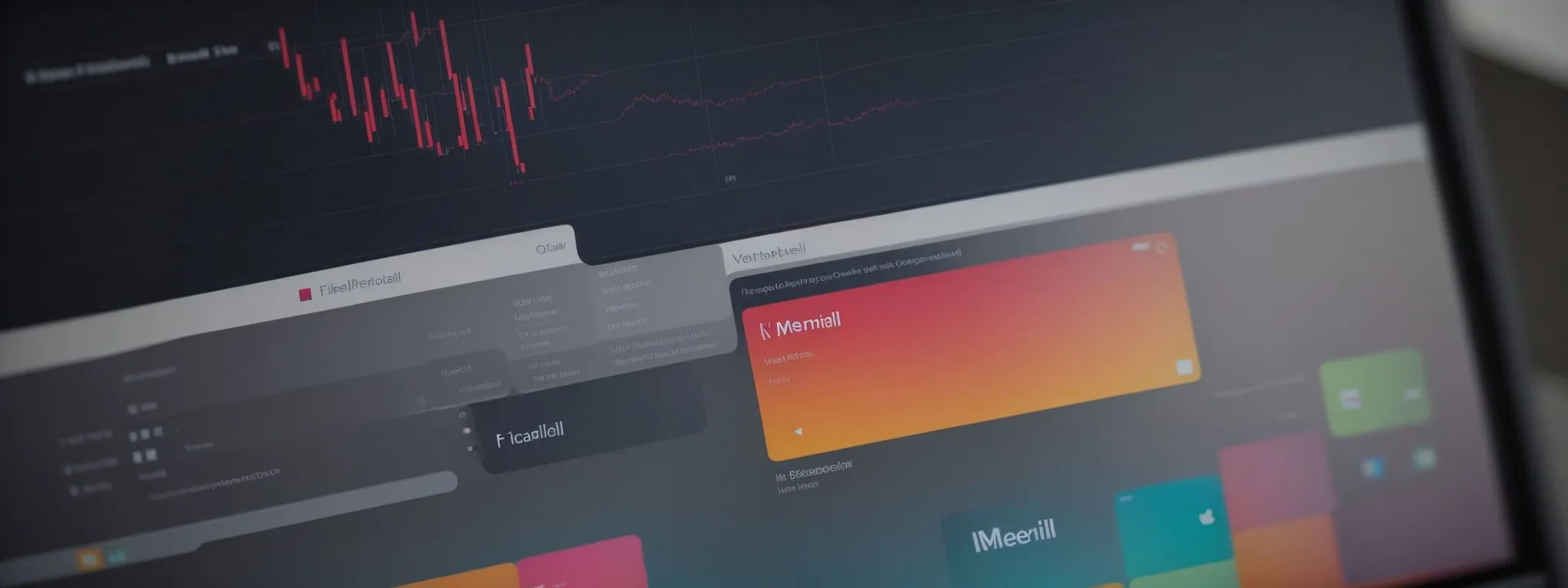Email Testing Tools
Your Ultimate Guide to Email Testing Tools for Flawless Campaigns In the competitive landscape of email marketing, the precise calibration of campaigns through testing is not just […]
Your Ultimate Guide to Email Testing Tools for Flawless Campaigns
In the competitive landscape of email marketing, the precise calibration of campaigns through testing is not just advantageous, but essential.
Email testing tools offer a prism through which marketers can scrutinize and enhance every facet of their email campaigns—from subject line effectiveness and email deliverability, to content appeal and spam resilience.
By leveraging these tools, organizations can significantly amplify their email campaign’s impact, bolstering open rates, engagement, and ultimately, return on investment.
Understanding the array of tools available and utilizing them effectively is a surefire way to ensure your email campaigns resonate with your audience and achieve their intended goals.
Keep reading to discover how email testing can transform your digital marketing efforts into a paradigm of excellence.
Key Takeaways
- Email Testing Tools Are Essential for Maintaining Deliverability and Enhancing Engagement in Campaigns
- Integration of These Tools With Automation Enhances Workflow Efficiency and Campaign Success
- Tools That Offer Intuitive Interfaces and in-Depth Analytics Empower Marketing Professionals to Optimize Campaigns
- Leveraging Data From Performance Metrics and a/B Testing Informs Strategic Email Campaign Refinements
- Staying Ahead in Email Marketing Requires Adaptability and the Use of Innovative Technologies for Personalization and Engagement
Exploring the World of Email Testing Tools

In an age where digital communication reigns supreme, the efficacy of email marketing campaigns hinges on the attention to detail prior to hitting the send button.
Thoughtful consideration of Email Testing Tools equates to a significant stride toward impeccable deliverability and engagement.
With an array of solutions in the market, it’s prudent for organizations to understand why these tools are indispensable, explore the key functionalities of top-tier platforms, and decipher the variety of features these tools provide.
This understanding not only assists in the crafting of error-free emails that display consistently across various clients but also enhances the overall performance of email marketing strategies.
Why Email Testing Tools Are Crucial
Email testing tools are a critical component in the arsenal of modern marketers, providing a safety net to detect potential issues before they impact the end user. These tools serve as the first line of defense against rendering problems, broken links, and overlooked mistakes that could derail an email campaign’s success.
It’s not merely about aesthetics; email testing tools powerfully contribute to the reputation and deliverability metrics of an email campaign. By ensuring that messages reach the inbox and resonate with the audience as intended, these tools play an influential role in safeguarding the sender’s credibility and maximizing the return on investment.
Key Functionalities of Leading Email Testing Platforms
Among the pivotal features of elite email testing platforms is the ability to scrutinize every element of an email’s presentation. This encompasses visual verification through email previews across numerous devices and email clients, guaranteeing that formatting remains pristine and messaging coherent across disparate screens and platforms.
The intelligent testing of subject lines and email content is another indispensable utility provided by these sophisticated systems: they not only flag potential spam triggers but also deliver insights into optimization for better open rates and engagement metrics.
- Visual email previews for consistency on various devices
- Assessment of subject lines for higher open rates
- Detection of spam triggers to enhance deliverability
- Insights into email content for improved engagement
Making Sense of Various Testing Tool Features
Email testing tools offer an assortment of features, designed to refine and elevate the user’s messaging efforts. Users typically gain access to functionality such as email client compatibility checks, which prevent display discrepancies, and in-depth analytics, which track elements like open rate and click-through rate.
| Feature | Function | Benefit |
|---|---|---|
| Email Client Compatibility | Ensures consistent email display across various clients | Prevents user confusion and maintains branding integrity |
| In-Depth Analytics | Tracks key performance metrics like open rate and click-through rate | Provides insight for optimizing email campaigns and improving ROI |
Furthermore, email deliverability testing is a core feature that scrutinizes the sender’s domain health and authentication measures such as SPF, DKIM, and DMARC, leading to reduced spam flagging and enhanced sender reputation:utput:
How to Choose the Right Email Testing Tool

Embarking on the quest for the ideal email testing tool demands a methodical approach tailored to the unique requirements of each organization’s email campaigns.
Whether it is about honing in on features that bolster deliverability rates, analyzing recipient engagement, or ensuring seamless visual rendering across myriad devices, the selection process is pivotal.
Culminating in a comparison of feature-rich offerings whilst weighing the cost against the tangible benefits, this stage determines the effectiveness and efficiency of one’s marketing efforts in the digital realm.
In this context, it becomes imperative for businesses to embark on an assessment that punctiliously scrutinizes and aligns with their marketing objectives.
Identifying Your Email Campaign Needs
In the pursuit of a suitable email testing tool, considering the intricacies of your email campaigns is indispensable: each carries its own set of objectives and challenges. Companies must analyze their specific goals, whether it’s enhancing user engagement, improving deliverability, or achieving meticulous brand consistency.
- Enhancing user engagement with personalized and relevant content
- Improving deliverability through rigorous spam and authentication checks
- Achieving meticulous brand consistency across all email platforms
Reflect upon the technical needs and the expertise within your team. If your organization excels in crafting compelling content but grapples with the technical aspects of email deliverability, prioritize tools that demystify the latter while complementing existing strengths.
Comparing Top Email Testing Tools
Comparing top email testing tools involves evaluating the range of functionalities that each offers. It is crucial for an organization to identify whether a tool excels in providing actionable analytics, comprehensive rendering previews, or perhaps it distinguishes itself with robust deliverability testing features.
While strengths may differ, the best tools on the market commonly provide a suite of functionalities designed to address a variety of troubleshooting and Optimization Needs:
- Email previews across a multitude of clients and devices
- Detailed spam and authentication checks to secure sender reputation
- Advanced analytics for tracking campaign performance indicators
- Customizable testing parameters to mirror diverse customer bases
After setting benchmarks for core features, comparing tools becomes a clearer process, allowing businesses to discern which software aligns seamlessly with their operational workflows and marketing objectives.
Understanding Pricing and Value for Money
Discerning the appropriate balance between cost and functionality is a vital aspect of selecting an email testing tool. Investments in these tools should be justified by tangible improvements in campaign metrics and overall efficiency gains.
Organizations must evaluate the pricing structure of an email testing tool against the expected return on investment: the goal is to enhance campaign performance without incurring unsustainable expenses.
| Consideration | Pricing Strategy | Projected ROI |
|---|---|---|
| Initial Cost | Upfront payment vs. subscription model | Immediate impact vs. long-term value |
| Features vs. Necessity | Tiered offerings aligned with needs | Mapping tool capability to campaign success |
| Scalability | Flexibility to grow with organizational needs | Adapting to increasing complexity and volume |
Mastering Spam and Deliverability Tests

As marketers finesse the art of email outreach, the specter of the spam folder looms large, threatening to swallow whole the potential of well-crafted email marketing campaigns.
To navigate this swiftly, one must delve deep into the realm of email testing tools that provide vital spam analysis and deliverability insights.
This segment of the guide underscores the value of proactively leveraging testing technologies to circumvent spam filters, refine the deliverability process, and ultimately secure a coveted spot in the recipient’s inbox.
Staying attuned to these testing practices ensures emails are not just sent but also seen and acted upon—elevating the trajectory of marketing communications.
The Importance of Avoiding the Spam Folder
Avoiding the spam folder is paramount, as emails that land there are seldom seen or acted upon, undermining the efforts and resources invested in email marketing campaigns. As such, email testing tools are indispensable in scrutinizing campaigns for spam triggers, allowing marketers to make necessary adjustments that prioritize deliverability and ensure messages reach the intended audience.
This scrutiny is not just about evading automated filters; it strengthens the sender’s reputation, increases open rates, and sustains subscriber engagement. Effective email testing translates to trust with email service providers, pivotal in securing a reliable pathway into the recipient’s inbox, thus amplifying the potential for meaningful customer interactions and conversions.
How to Use Testing Tools for Spam Analysis
Conducting an analysis with email testing tools begins with scrutinizing the email content, subject line, and sender information to identify potential red flags that could trigger spam filters. These tools simulate how different email providers perceive an email, empowering marketers to preemptively correct or optimize elements to enhance deliverability.
Furthermore, utilizing these tools offers an in-depth examination of the Email’s Technical Framework, including a comprehensive check of headers, authentication standards, and domain reputation. This granular approach to testing ensures that the technical underpinnings of an email adhere seamlessly to best practices, effectively reducing the likelihood of being categorized as spam.
Improving Deliverability With Testing Insights
Insights from email testing tools can markedly enhance deliverability by informing strategic adjustments to email campaigns. These insights, drawn from meticulous analysis and testing, provide clear directives for fine-tuning every aspect of an email to meet the exacting standards of ISPs and, more importantly, the expectations of the audience.
Detailed reports from these tools illuminate the paths for optimization: from the technical precision of one’s sending protocols to the alignment of content with recipient preferences. They offer a compass for navigating the nuanced email landscape, ensuring that every campaign has the best chance to reach its target inbox:
- Detailed analytics spotlight areas for content and layout improvements to increase relevance and engagement.
- Deliverability tests highlight technical adjustments needed to improve sender reputation and inbox placement rates.
- Continuous monitoring allows for real-time corrections, maintaining the efficacy of the email strategy over time.
Deployment of these insights serves as a bridge to heightened deliverability, cementing the integrity of the sender while fostering a scalable framework for ongoing email marketing success. Armed with this knowledge, businesses can anticipate and mitigate deliverability challenges, confidently propelling their messages toward their intended destination.
Design and Content Preview in Different Environments

In the meticulous world of email marketing, the visual integrity of each message is pivotal for its success.
This segment delves into the imperative steps to assure that every campaign exhibits visual consistency, no matter the device or email client on which it is rendered.
Comprehensive previews across diverse environments serve as a vital checkpoint for marketers, ensuring each email appears as intended and maintains its designed impact without compromise.
This approach to device and client testing is thus a linchpin in the grand strategy of any campaign, underpinning the assurance that the end user’s experience is both seamless and engaging.
Ensuring Visual Consistency Across Devices
In the digital marketing arena, ensuring a consistent visual presentation of email content across an array of devices is fundamental to maintaining brand image and fostering recipient trust. With the varying screen sizes and resolutions from desktops to smartphones, email testing tools become critical in confirming that design elements and content scale appropriately and remain aesthetically pleasing.
These tools offer marketers a preview of their email’s appearance in real-time settings, allowing for immediate corrections and adjustments. By using these previews, businesses are able to detect and resolve issues that could otherwise compromise the user’s experience due to device incompatibility:
- Verification of responsive design to ensure emails adapt to different screen sizes.
- Consistency in font rendering and image display across diverse devices.
- Testing interactive elements like buttons or links to guarantee functionality.
Previewing Emails on Various Email Clients
Previewing emails on various email clients is not just about cross-device compatibility; it’s about ensuring that an email’s design and content are harmoniously displayed regardless of the recipient’s chosen platform. Even as users switch between clients like Apple Mail, Outlook, or Gmail, the structural integrity and layout of an email should remain unaffected, delivering a consistent experience that reflects well on a brand’s attention to detail.
| Email Client | Compatibility Check | User Experience |
|---|---|---|
| Apple Mail | Comprehensive design and functionality testing | Seamless reading and interaction for Apple device users |
| Outlook | Diverse version assessment to ensure fidelity | Ensured clarity and responsiveness for desktop users |
| Gmail | Rendering verification on both web and mobile interfaces | Optimized display for the most popular email service |
A precise understanding of each email client’s rendering engine is critical for marketers striving for perfection in their campaigns: An email’s journey from sender to receiver is riddled with complex variables. Modern email testing tools dissect these intricacies, enabling the delivery of messages that are not only visually striking but also technically sound within the diverse ecosystem of email clients.
The Role of Device and Client Testing in Campaigns
The role of device and client testing in campaigns cannot be overstated, as it ensures the seamless transition of email content across the digital landscape. By proactively addressing the compatibility of emails, businesses safeguard the user experience, which is instrumental in maintaining engagement and boosting campaign efficacy.
Device and client testing becomes a cornerstone in the optimization of email campaigns, allowing marketers to preemptively tackle the intricacies of diverse email environments. This strategic testing fortifies the reliability of message delivery, fostering a sense of professionalism that resonates with recipients and bolsters confidence in the brand.
The Benefits of Integrating Email Testing in Automation

In the intricate tapestry of email marketing, the harmonization of email testing tools with automation infrastructure presents a transformative opportunity for campaigns.
The purposeful integration of these systems streamlines workflows, intricately connects testing functionalities with email platforms, and amplifies efficiency across the board.
This convergence is paramount for marketers aiming to infuse their campaigns with precision and agility, enabling them to execute complex marketing strategies with the finesse and exactitude necessary for today’s competitive digital landscapes.
Streamlining Workflow With Email Testing Automation
Integrating email testing tools within automation frameworks propels a company’s marketing mechanisms to new heights of productivity. This fusion effectively minimizes manual intervention, allowing teams to allocate resources towards strategic initiatives rather than the tedious nuances of email testing.
Successful campaigns emerge from Efficient Processes, and automation of email testing embodies this principle. It ensures that each communication dispatched aligns with predefined quality parameters, thereby maintaining a consistent brand narrative and customer experience.
Connecting Testing Tools With Email Platforms
The integration of email testing tools with email platforms streamlines the campaign process, enabling seamless transitions between the creation and deployment stages. By embedding testing protocols directly into the Email Platform’s Infrastructure, brands can effortlessly apply quality assurance measures to their communications without disrupting the workflow.
Direct connectivity ensures that users can leverage the full spectrum of testing capabilities, including deliverability assessments and spam analysis, within the familiar environment of their chosen email platforms. This strategic unity not only simplifies operations but also enriches the campaign lifecycle with critical insights that drive engagement and success.
Enhancing Efficiency With Integrated Solutions
By integrating email testing tools with marketing automation solutions, organizations gain the ability to conduct comprehensive email tests within streamlined, automated sequences. This integration reduces the time and effort required to ensure email campaigns are error-free, seamlessly bolstering productivity while minimizing the likelihood of human error.
Such integrated solutions empower marketing teams to swiftly adapt to insights garnered from email tests, facilitating rapid enhancements in campaign quality. The efficiency gained from this synergy allows brands to focus on refining their strategies and content—ultimately elevating the effectiveness of their marketing communications.
Using Analytics to Refine Email Campaigns

In the realm of email marketing, the measurement and interpretation of performance data serve as the backbone for strategic refinements.
As marketers meticulously deploy their crafted messages, a wealth of analytics awaits to be transformed into actionable insights.
The tracking of performance metrics post-test illuminates the pathway to campaign optimization, allowing data-driven decisions to refine email strategies.
Furthermore, the iterative process of A/B Testing stands as a critical tool, revealing which variations resonate best with audiences and thereby propelling incremental improvements.
This analytic rigor ensures each email campaign is not merely launched but also precisely tuned for peak performance.
Tracking Performance Metrics Post-Test
Post-test performance metrics are indispensable tools in the marketer’s arsenal, offering a window into the effectiveness of their email campaigns. These metrics, which include but are not limited to open rates, click-through rates, and conversion data, help in identifying patterns and trends that can inform future campaign adjustments.
Analysing these performance indicators facilitates a granular understanding of recipient behavior, which is paramount to fine-tuning the nuances of email outreach. Such analysis aids in uncovering the aspects of an email that captivate the audience, providing valuable insights into crafting subsequent campaigns for heightened engagement and success.
Leveraging Data to Improve Email Strategies
In the competitive landscape of email marketing, data analysis stands as a lighthouse, guiding strategic direction and fostering enhanced performance. By deftly harnessing campaign metrics, companies can distill valuable insights, fine-tuning their email strategies to meet and surpass market exigencies with surgical precision.
Organizations adept at leveraging data insights to sculpt their email strategies exponentially increase their campaigns’ relevance and resonance with target audiences. This meticulous use of data serves not just as a reactionary gauge but as a proactive tool, galvanizing the creation of emails that captivate and convert, propelling marketing endeavors to new pinnacles of success.
A/B Testing and Iterative Campaign Improvement
Effective email campaigns depend on a process of continuous refinement, a journey where A/B testing serves as the compass. By simultaneously sending variations of content, subject lines, or call-to-actions to segmented user groups, marketers can harvest rich data on preferences and behaviors, shaping narratives and tactics to achieve superior outcomes.
Practitioners recognize the merit in an iterative approach, where the insights gleaned from A/B tests drive incremental enhancements to all aspects of campaign design and content. This spiraling process of test, learn, and improve becomes the heartbeat of agile marketing strategies, assuring a consistent evolution in line with audience expectations and business goals.

Embarking on email campaign creation requires tools that are not just potent in functionality but also streamlined in their usability.
A focus on user-friendly interfaces can greatly diminish the learning curve for marketers, enhancing the deployment and monitoring of email strategies.
It is essential for these platforms to offer access to support and educational materials, facilitating swift resolutions to technical queries.
Additionally, tools with intuitive dashboards play a critical role in enabling marketing professionals to navigate data and campaign metrics efficiently, ensuring campaigns are managed with precision and ease.
User-Friendly Interfaces for Marketers
Marketers endeavoring to execute successful email campaigns seek tools that not only boast robust capabilities but also exemplify ease of use. An email testing tool’s user-friendly interface substantially reduces complexity, allowing professionals to swiftly navigate the functionalities needed to finescale their email outreach endeavors.
Integrating such platforms with a clear and intuitive dashboard streamlines the process of campaign monitoring, enabling users to manage their email strategies efficiently. Simplicity in design enhances the marketer’s experience, allowing for quick access to essential features and a more agile response to the fast-paced demands of email marketing campaigns.
Accessing Support and Educational Resources
Email testing tools should be complemented by comprehensive support systems and educative resources that ensure organizations can leverage their full potential. A professional-grade tool comes equipped with a responsive customer service team, detailed FAQs, and a knowledge base that collectively contribute to a smoother user experience and quicker resolution of queries.
Furthermore, the availability of educational resources such as tutorials, webinars, and best practice guides empowers users to continuously develop their expertise in email testing. This perpetual learning environment elevates a brand’s ability to conduct insightful email tests, directly impacting the success of its marketing campaigns.
Adopting Tools With Intuitive Dashboards
An effective email testing tool integrates an intuitive dashboard that serves as the command center for campaign oversight, embodying the convergence of simplicity and capability. Marketing professionals benefit immensely from such dashboards that offer a visually coherent landscape of tools, metrics, and results, enabling them to navigate and manage campaigns with unparalleled ease.
The adoption of email testing platforms boasting intuitive dashboards markedly enhances efficiency, reducing the time spent deciphering data and maximizing the focus on strategic analysis and decision-making. This streamlined interaction with the platform resources ensures that campaigns are not just executed, but adeptly guided to their full potential through a user-centered interface.
Real-World Examples of Successful Email Testing

Examining the landscape of email marketing, one realizes the invaluable role of empirical evidence in sculpting triumphant strategies.
In the forthcoming exploration of real-world applications, we will delve into the compelling case studies of email campaigns that achieved flawlessness through meticulous testing processes.
By distilling learning from industry best practices and adapting strategies from these success stories, businesses can illuminate a path to elevate their own email communications.
This section will navigate the transformative influence of email testing tools, providing insights into how precision-led campaigns can yield a marked advantage in the realm of digital engagement.
Case Studies of Flawless Email Campaigns
In the competitive crucible of email marketing, expertly executed campaigns underscore the value of comprehensive email testing. A case study from a leading online retailer demonstrated the transformative potential of such testing: by identifying and resolving a small discrepancy in email template coding, the retailer boosted email-driven conversions by an impressive 20%.
- Critical code adjustments identified through email testing led to a substantial increase in conversions.
- Intensive spam filter assessments resulted in a dropout of sender blacklistings and reinforced inbox deliverability.
Another compelling case involved a financial services provider whose diligence in deliverability testing yielded a remarkable upsurge in client engagement. Rigorous analysis and iterative improvements in subject line testing saw their email open rates soar, corroborating the direct correlation between targeted email testing practices and overall campaign performance.
Learning From Industry Best Practices
Embracing best practices in email testing equips marketers with the insights needed to navigate the complexities of email deliverability and engagement. Through careful observation of industry benchmarks, companies can implement proven methodologies, such as dynamic content testing and segmentation strategies, enhancing the relevance and impact of their email campaigns.
Organizations committed to excellence in email marketing continually evolve by integrating feedback from email testing data into their campaign strategies. By doing so, they refine their targeting techniques and optimize messaging to ensure consistent alignment with the changing preferences and behaviors of their audience, securing their position at the forefront of digital communications.
Adapting Strategies From Success Stories
Adapting strategies from success stories in email marketing enables businesses to replicate and scale the triumphs of industry leaders. By analyzing the tactical shifts that led to outstanding outcomes, companies can integrate similar approaches, tailoring them to their unique context and audience.
Using these success stories as blueprints, businesses can not only learn what works but also why certain strategies succeeded: from the optimization of email subject lines that led to skyrocketing open rates to the fine-tuning of call-to-action buttons that boosted click-through rates. This transference of knowledge is indispensable for continuous improvement in the competitive space of email marketing.
| Strategy Element | Example Success | Outcome |
|---|---|---|
| Email Subject Line Optimization | Financial services provider achieves higher open rates | Increased user engagement and potential leads |
| Call-to-Action Refinement | Online retailer sees a rise in conversions | Enhanced customer interaction and sales figures |
Preparing for Future Email Marketing Trends

As email marketing continues to evolve in a rapidly changing digital landscape, the importance of staying ahead through adaptation and innovation cannot be overstated.
The ways in which users engage with email are shifting, requiring marketers to anticipate these changes and refine their tools and strategies to maintain seamless communication.
By precisely tailoring testing tools to emergent technologies and demonstrating foresight in the face of email marketing trends, professionals can sustain a competitive edge.
This guide now turns its focus to the forward-looking practices that will ensure campaigns not only resonate with today’s audience but also are prepared to meet the challenges and opportunities of tomorrow.
Anticipating Changes in Email Consumption
Email marketers must remain astute observers of consumer habits, evolving technologies, and the ensuing changes in email consumption patterns. With the advent of advanced machine learning algorithms and artificial intelligence in email platforms, the future points towards more personalized and interactive email experiences.
Professionals in the field must prepare for a landscape where mobile-first design is not just a best practice but a necessity, as a growing majority of users now interact with emails primarily on mobile devices. Responsiveness to these shifts will be critical in crafting campaigns that retain their impact and effectiveness.
Adapting Testing Tools to Emerging Technologies
As digital marketing propels forward, the necessity for email testing tools to keep pace with emerging technologies is clear. Innovative features such as artificial intelligence-driven content analysis and predictive engagement models are becoming integral, enabling businesses to craft emails that resonate deeply with an ever-evolving audience.
Email marketers are recognizing the significance of integrating advanced technologies into their testing tools, accommodating for augmented reality experiences and voice-activated interactions. Staying attuned to these technological advancements allows for the creation of immersive and engaging email content that stands out in a crowded inbox.
Staying Ahead of the Curve in Email Marketing
Staying ahead of the curve in email marketing necessitates a vigilant approach to innovation and adaptability. Marketers must not only embrace contemporary practices but also anticipate the roadmap of technological and behavioral trends shaping the future of email communication.
Forward-thinking professionals utilize testing tools that are adaptable, evolving with new standards and consumer expectations to ensure ongoing campaign relevance. These tools empower email marketing campaigns to resonate with dynamic user preferences, reflecting a brand’s commitment to staying at the forefront of industry changes:
- Integrating emerging technologies for enhanced personalization and interactivity
- Employing advanced analytics to predict consumer behavior and tailor content
- Optimizing for mobile responsiveness as mobile device prevalence continues to grow
Conclusion
In conclusion, email testing tools are indispensable for crafting successful email marketing campaigns.
They provide a safety net against rendering issues, broken links, and deliverability pitfalls, thereby protecting the sender’s reputation and optimizing investment returns.
The core functionalities of leading platforms include visual previews, spam detection, and analytical insights that help fine-tune content for improved user engagement.
Selecting the right email testing tool involves understanding campaign needs, comparing tool features, and considering pricing strategies to ensure a valuable return on investment.
Utilizing these tools effectively enables marketers to avoid the spam folder, ensure visual consistency across devices and email clients, and integrate testing into automation for streamlined workflows.
Additionally, leveraging analytics and A/B testing refines campaigns, while user-friendly interfaces enhance usability.
Real-world success stories underscore the transformative effect of meticulous email testing in achieving stellar campaign results.
Looking ahead, staying abreast of technological advancements and consumer trends is crucial in ensuring that email marketing remains effective and relevant in an ever-evolving digital arena.















































































